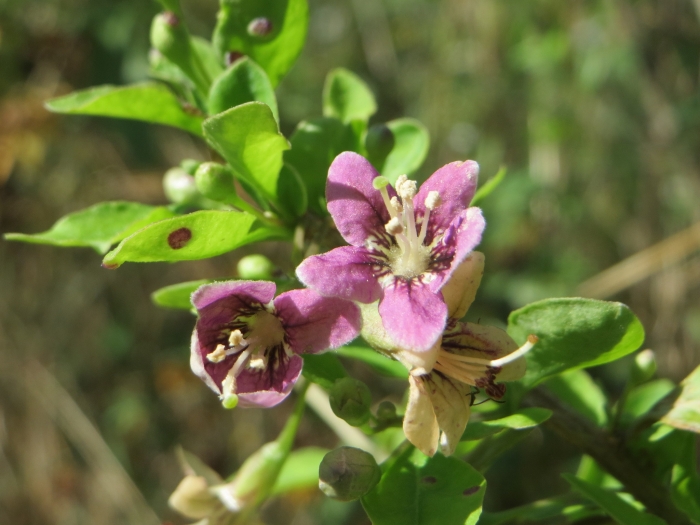Chinese Boxthorn
(Lycium chinense)
Chinese Boxthorn (Lycium chinense)
/
/

Andreas Rockstein
CC BY-SA 4.0
























Estimated Native Range
Summary
Chinese boxthorn is valued for its goji berries, which are rich in nutrients and antioxidants, and have been used in traditional Chinese medicine for centuries. The plant is also appreciated for its drought tolerance once established, making it suitable for xeriscaping. It is used in ornamental gardens for its attractive flowers and berries, and can be grown as a hedge or screen. Chinese boxthorn prefers full sun to part shade and well-drained soils. It is adaptable to a range of soil types, from sandy to loamy. However, gardeners should be cautious as Lycium chinense can become invasive outside its native range, spreading through both seed and root suckers. Regular pruning is recommended to control its spread and to maintain a desirable shape.CC BY-SA 4.0
Plant Description
- Plant Type: Shrub, Vine
- Height: 6-12 feet
- Width: 4-6 feet
- Growth Rate: Moderate
- Flower Color: Purple
- Flowering Season: Spring, Summer
- Leaf Retention: Deciduous
Growth Requirements
- Sun: Full Sun
- Water: Medium
- Drainage: Fast, Medium, Slow
Common Uses
Border Plant, Drought Tolerant, Edible*Disclaimer: Easyscape's listed plant edibility is for informational use. Always verify the safety and proper identification of any plant before consumption., Low Maintenance, Potted Plant
Natural Habitat
Native to scrublands, forest margins, and along riverbanks in China and other parts of East Asia
Other Names
Common Names: Chinese Boxthorn, Goji Berry, Chinese Desert-Thorn, Chinese Matrimony-Vine, Chinese Wolfberry
Scientific Names: , Lycium chinense, Boberella rhombifolia, Jasminoides rhombifolium, Lycium barbarum, Lycium barbarum var. chinense, Lycium chinense subsp. rhombifolium, Lycium chinense var. ovatum, Lycium chinense var. rhombifolium, Lycium chinense var. rhombifolium
GBIF Accepted Name: